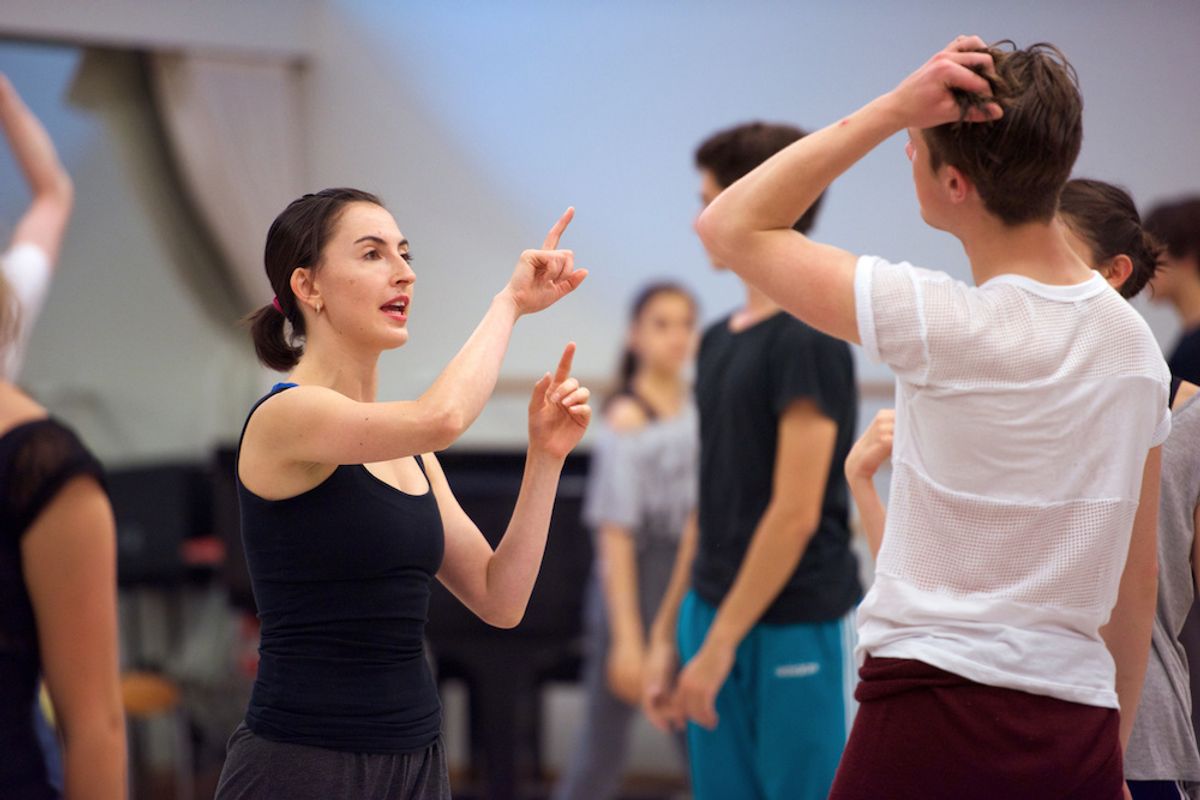
Ask a 5-year-old to make up a dance, and she’ll probably skip around the room, impulsively moving to the music. But give the same assignment to a teenage dancer, and the student might clam up, unsure what to do. Even mature dancers can feel reluctant to create something new, especially if they’ve never tried their hand at choreography. “I wasn’t exposed to the art of making dances until I was in college,” says Lauren Giordano Curran, faculty at Gus Giordano Dance School in Chicago. “I felt self-conscious because I had never had that experience.”
It’s easy to overlook the vital practice of helping dancers develop their creative voices, when so much of dance training tends to focus on technique and repertory. But teachers can introduce the art of making dances in age-appropriate ways, giving students the tools they need to choreograph and the confidence to do it.
Start with Improv
“Making dances starts with improvisational concepts first,” says Janis Brenner, artistic director of Janis Brenner & Dancers and on faculty at The Juilliard School in New York City. When working with young dancers, harness their creativity by having them build on one idea at a time. Play with space in the room, for example: Where is front and back? How can they move on a diagonal?
Giordano Curran likes to start with a basic shape, like a rectangle, or even an animal. “Give them something they can really imagine, then they can mimic what they see,” she says. “Getting comfortable with improv at a young age will make choreographing easier for them, more natural.”
As students mature, try offering classes on improvisation, which could then lead into composition or choreography. “Get them to think creatively about movement rather than pre-learned steps, styles or techniques,” says Brenner. “It should be mandatory, like jazz or ballet. Then they can really apply the joy of moving into their own unique vocabulary.”
Offer Parameters
Students need structure to help guide their improvisation and, eventually, their choreographic approach. “When young people aren’t given parameters, they can feel pretty intimidated,” says Brenner. “They end up trying to do tricks to impress rather than thinking about movement invention.” With more experienced students, Brenner suggests working with abstract concepts like space, time, shape and motion. “Each little motif becomes the guiding principle that allows you to stay in the idea.”
Music can also provide structure. Giordano Curran selects age-appropriate songs for students so they can “tap into an idea and connect to it”—songs offer built-in narrative ideas for dancers to draw from. Brenner will quietly play atmospheric music in the room while students improvise, watching as movements take on their own phrasing and dynamics. Once the material is set, Brenner talks about how music can influence the experience. If students start presenting their dance to Bach, for example, she will then have them try the same movements to a song from Björk. “They’ll see movement in a completely different context and feeling,” says Brenner. “Show them how a choreographic phrase can be so many different things depending on what you do with it.”
 Lauren Giordano Curran of Gus Giordano Dance School, Chicago. Photo courtesy of Gus Giordano Dance School
Lauren Giordano Curran of Gus Giordano Dance School, Chicago. Photo courtesy of Gus Giordano Dance School
Work Together
When students start to choreograph, put them in pairs or small groups so they don’t feel like they’re being put on the spot or judged in any way. Dana Genshaft, contemporary teacher at San Francisco Ballet School, sometimes organizes students into groups based on material they’ve created. “Each group has a flavor and ingredients I feel would be most successful together,” she says. She then gives each group a choice of three music options and lets them run with it. “The goal is to allow students to make choices together. The kids learn how many choices there are in choreography and how to filter their decisions based on logic and aesthetic.”
Brenner sometimes asks dancers to work in pairs, and then each duet teaches their choreography to a new couple. “All of a sudden you’ve got a quartet,” she explains. “They have to explain what they just made up and develop a language for directing or imparting movement information.” Some students might show the choreography, while others articulate what they’ve done in words. It’s an exercise for students about how to share and develop new material.
If you can empower young dancers to move creatively and consider movement theory, you are nurturing a new generation of choreographers. “Teachers can help with the building blocks,” says Genshaft. “Allow students to experiment when they’re young, and they’ll walk away with a growing respect for the choreographic process. Maybe they’ll be motivated to try it again.”




